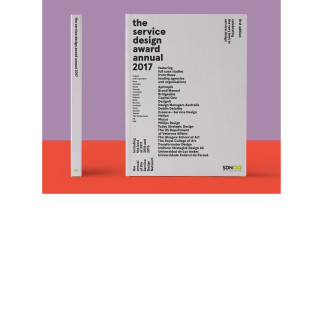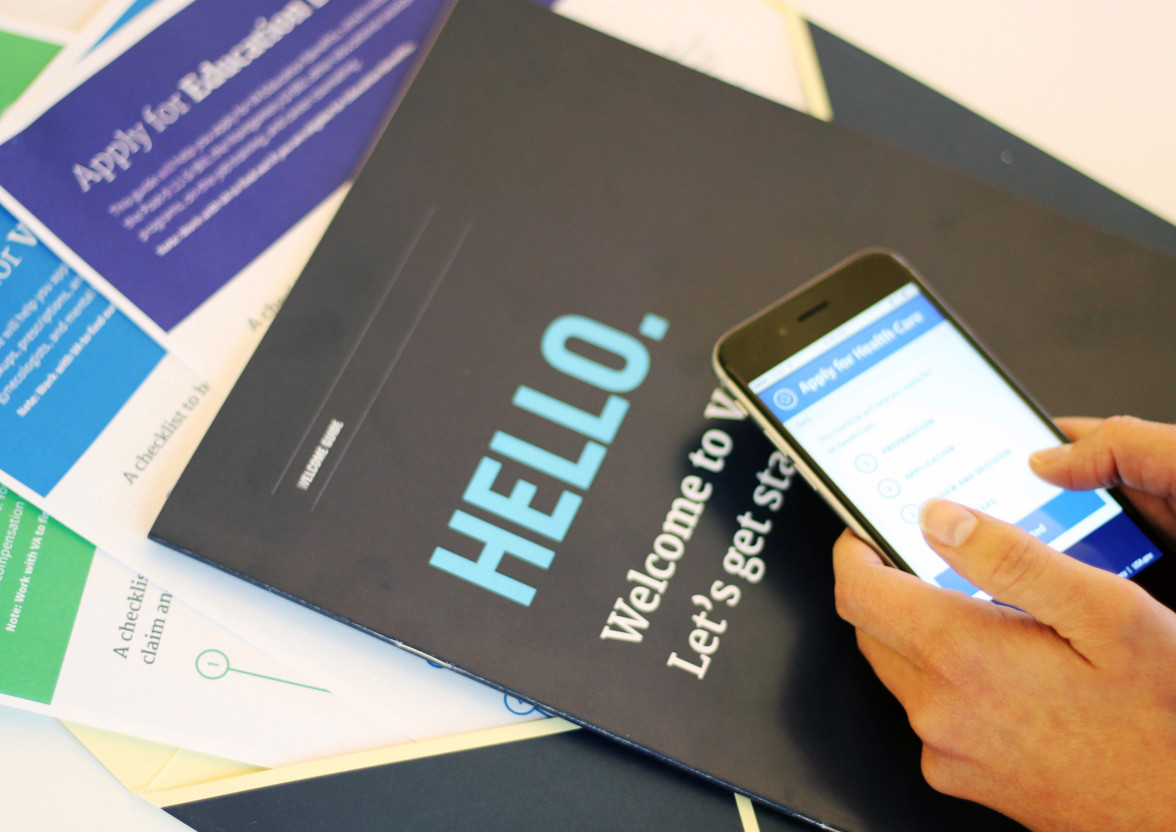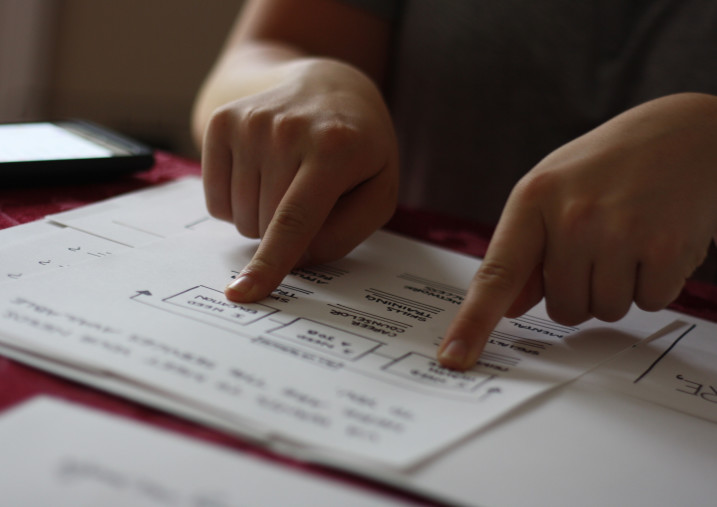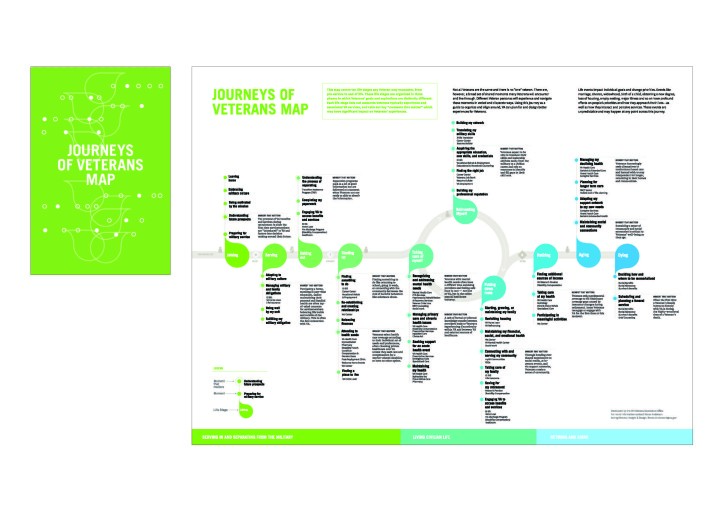ONBOARDING EXPERIENCE IMPROVEMENTS FOR VETERANS
During initial research, Veterans repeatedly noted separation as one of the most challenging periods of their lives. To acclimate transitioning servicemembers, our team redesigned the VA onboarding experience.
PROCESS
Co-designing & Prototype Testing Our team used an iterative approach to prototyping design improvements. We began our process by interviewing, co-designing, and testing the value proposition of potential prototypes with currently separating servicemembers, recently separated Veterans, long-time Veterans, and Veterans reengaging with VA. Throughout the research process we iterated on materials, and sought feedback from stakeholders as well.
A Future Onboarding Experience
Many Veterans are eager to get started using these tools to help them navigate VA’s complex landscape of benefits and services. While these tools will help bridge the gap between service and life as a Veteran, they will also be used as a resource across time, helping Veterans understand the full scope of VA services and when they fit into their lives. These tools will be both digital and analog to provide easy access for all Veterans.
OUTPUTS AND IMPACT
Set of Communication Materials Veterans needed a simpler way to understand VA’s full scope of offerings. Our communication materials organized VA benefits and services across the phases of the Journeys of Veterans map, enabling Veterans to see the full scope of offerings according to when they might use them during their life. This supported Veterans in making informed decisions about which services to access at the most appropriate time in their lives.
A FUTURE ONBOARDING EXPERIENCE
Many Veterans are eager to get started using these tools to help them navigate VA’s complex landscape of benefits and services. While these tools will help bridge the gap between service and life as a Veteran, they will also be used as a resource across time, helping Veterans understand the full scope of VA services and when they fit into their lives. These tools will be both digital and analog to provide easy access for all Veterans.
“A Welcome Kit lasts a couple of months. We’re talking about something that lasts a lifetime.” –Tom Allin, Former Chief Experience Officer of VA
OVERALL IMPACT
By collaborating with stakeholders across VA, our team helped make significant improvements to Veterans’ experiences, driving a shift within the organization from a cost and efficiency mindset to a value and experience mindset.
Think Big By synthesizing deep qualitative research into easily digestible and powerful visualizations, our team facilitated productive conversations to align VA on Veterans’ most urgent needs, assess the efficacy of current offerings, and identify and prioritize opportunities for high-impact design interventions.
Start Small By starting small and initially focusing on easily implementable solutions, our team demonstrated immediate impact of both the method and design tools. We gained stakeholder buy-in evidenced by the adoption of the method across business units, built momentum resulting in scheduled implementation of the onboarding materials, and inspired the organization toward continued action.
Act Fast Through our build-test-learn approach, our team tested and designed prototypes quickly and collaboratively, rapidly iterating on the designs which resulted in products precisely tailored to Veterans’ needs. Our rapid approach encouraged VA stakeholders to adopt similar methods within their own business units, scaling innovation and promoting incremental change immediately across VA.
IMPACT
STAKEHOLDERS
From 158 stand-alone products and services to a holistic offering across 10 life stages
EMPLOYEES
From 175 days to 30 days to fill vacancies
VETERANS
From 208 pages to 20 pages of welcome information potentially distributed to 12M Veterans.
VA continues to harness human-centered design as a means to enhance strategic decision making, facilitate productive collaboration across business units, enable front-line employees to deliver great service, and design streamlined experiences for Veterans engaging with VA.












Share your thoughts
0 RepliesPlease login to comment